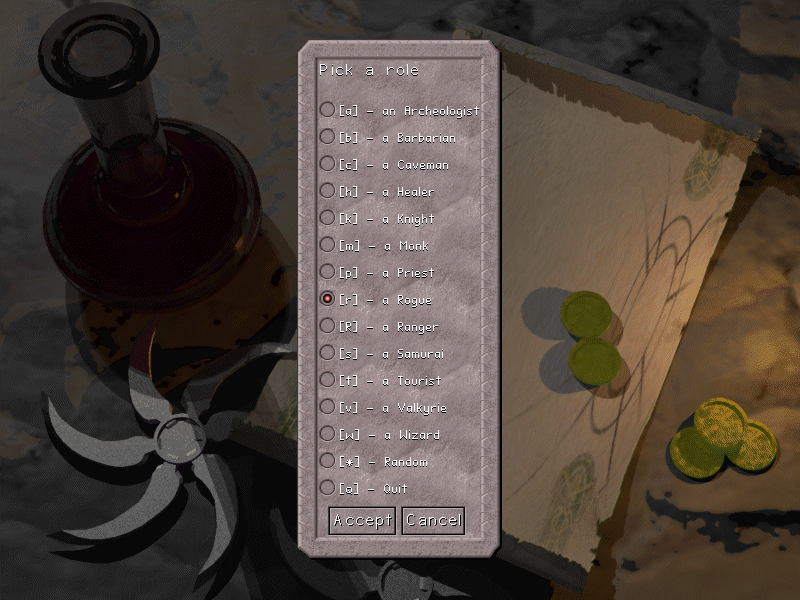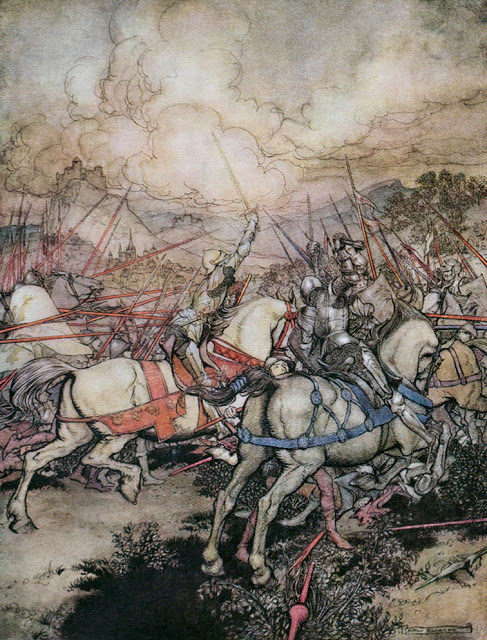|
MorgenGrauen Mudlib
''MorgenGrauen'', abbreviated ''MG'', is a German-language MUD, a text-based online role-playing game, founded in 1992 and opened to the public in 1993. It is noted as popular in the MUD world, described at times as having an average of around 100 players online per day, with some days seeing 220 players. It bills itself, and has been noted by others, as the world's largest German-speaking MUD. Its name means "Dawn", or specifically and literally "morning-gray", the dawn twilight. Game characteristics ''MorgenGrauen'' takes place in a medieval fantasy setting. Players may choose between the human, elf, dwarf, hobbit, goblin, dark elf and feline races for their characters. "Guilds" are found rather than character classes; fantasy RPG staples such as the Fighter, Magician, and Cleric are present, but also such distinctive flourishes as the Karate, Chaos, and Beer Shaker guilds, in total 10. The MUD allows new users to log in as a guest character, but guests are often ignored ... [...More Info...] [...Related Items...] OR: [Wikipedia] [Google] [Baidu] |
LDMud
LPMud, abbreviated LP, is a family of MUD server software. Its first instance, the original LPMud game driver, was developed in 1989 by Lars Pensjö (hence the LP in LPMud). LPMud was innovative in its separation of the MUD infrastructure into a virtual machine (known as the driver) and a development framework written in the LPC programming language (known as the mudlib). Motivation Pensjö had been an avid player of TinyMUD and AberMUD. He wanted to create a world with the flexibility of TinyMUD and the style of AberMUD. Furthermore, he did not want to have sole responsibility for creating and maintaining the game world. He once said, "I didn't think I would be able to design a good adventure. By allowing wizards coding rights, I thought others could help me with this." The result was the creation of a new, C-based, object-oriented programming language, LPC, that made it simple for people with minimal programming skills to add elements like rooms, weapons, and monsters to a v ... [...More Info...] [...Related Items...] OR: [Wikipedia] [Google] [Baidu] |
Character Class
In tabletop games and video games, a character class is a job or profession commonly used to differentiate the abilities of different game characters. In role-playing games (RPGs), character classes aggregate several abilities and aptitudes, and may also detail aspects of background and social standing, or impose behavior restrictions. Classes may be considered to represent archetypes, or specific careers. RPG systems that employ character classes often subdivide them into levels of accomplishment, to be attained by players during the course of the game. It is common for a character to remain in the same class for its lifetime; although some games allow characters to change class, or attain multiple classes. Some systems eschew the use of classes and levels entirely; others hybridize them with skill-based systems or emulate them with character templates. In shooter games and other cooperative video games, classes are generally distinct roles with specific purposes, weapons or ... [...More Info...] [...Related Items...] OR: [Wikipedia] [Google] [Baidu] |
MUD Games
A MUD (; originally multi-user dungeon, with later variants multi-user dimension and multi-user domain) is a multiplayer real-time virtual world, usually text-based or storyboarded. MUDs combine elements of role-playing games, hack and slash, player versus player, interactive fiction, and online chat. Players can read or view descriptions of rooms, objects, other players, non-player characters, and actions performed in the virtual world. Players typically interact with each other and the world by typing commands that resemble a natural language. Traditional MUDs implement a role-playing video game set in a fantasy world populated by fictional races and monsters, with players choosing classes in order to gain specific skills or powers. The objective of this sort of game is to slay monsters, explore a fantasy world, complete quests, go on adventures, create a story by roleplaying, and advance the created character. Many MUDs were fashioned around the dice-rolling rules ... [...More Info...] [...Related Items...] OR: [Wikipedia] [Google] [Baidu] |
LPMud
LPMud, abbreviated LP, is a family of MUD server software. Its first instance, the original LPMud game driver, was developed in 1989 by Lars Pensjö (hence the LP in LPMud). LPMud was innovative in its separation of the MUD infrastructure into a virtual machine (known as the driver) and a development framework written in the LPC programming language (known as the mudlib). Motivation Pensjö had been an avid player of TinyMUD and AberMUD. He wanted to create a world with the flexibility of TinyMUD and the style of AberMUD. Furthermore, he did not want to have sole responsibility for creating and maintaining the game world. He once said, "I didn't think I would be able to design a good adventure. By allowing wizards coding rights, I thought others could help me with this." The result was the creation of a new, C-based, object-oriented programming language, LPC, that made it simple for people with minimal programming skills to add elements like rooms, weapons, and monsters to a v ... [...More Info...] [...Related Items...] OR: [Wikipedia] [Google] [Baidu] |
Mudlib
A MUD (; originally multi-user dungeon, with later variants multi-user dimension and multi-user domain) is a Multiplayer video game, multiplayer Time-keeping systems in games#Real-time, real-time virtual world, usually Text-based game, text-based or storyboard, storyboarded. MUDs combine elements of role-playing games, hack and slash, player versus player, interactive fiction, and online chat. Players can read or view descriptions of rooms, objects, other players, non-player characters, and actions performed in the virtual world. Players typically interact with each other and the world by typing commands that resemble a natural language. Traditional MUDs implement a role-playing video game set in a fantasy world populated by List of species in fantasy fiction, fictional races and monsters, with players choosing character class, classes in order to gain specific skills or powers. The objective of this sort of game is to slay monsters, explore a fantasy world, complete quests, g ... [...More Info...] [...Related Items...] OR: [Wikipedia] [Google] [Baidu] |
University Of Münster
The University of Münster (german: Westfälische Wilhelms-Universität Münster, WWU) is a public university, public research university located in the city of Münster, North Rhine-Westphalia in Germany. With more than 43,000 students and over 120 fields of study in 15 departments, it is Germany's fifth largest university and one of the foremost centers of German intellectual life. The university offers a wide range of subjects across the sciences, social sciences and the humanities. Several courses are also taught in English, including PhD, PhD programmes as well as postgraduate courses in geoinformatics, geospational technologies or information systems. Professors and former students have won ten Gottfried Wilhelm Leibniz Prize, Leibniz Prizes, the most prestigious as well as the best-funded prize in Europe, one Fields Medal and two Nobel Prize, Nobel Prizes. The WWU has also been successful in the German government's German Universities Excellence Initiative, Excellence Init ... [...More Info...] [...Related Items...] OR: [Wikipedia] [Google] [Baidu] |
Player Character
A player character (also known as a playable character or PC) is a fictional character in a video game or tabletop role-playing game whose actions are controlled by a player rather than the rules of the game. The characters that are not controlled by a player are called non-player characters (NPCs). The actions of non-player characters are typically handled by the game itself in video games, or according to rules followed by a gamemaster refereeing tabletop role-playing games. The player character functions as a fictional, alternate body for the player controlling the character. Video games typically have one player character for each person playing the game. Some games, such as multiplayer online battle arena, hero shooter, and fighting games, offer a group of player characters for the player to choose from, allowing the player to control one of them at a time. Where more than one player character is available, the characters may have distinctive abilities and differing styles ... [...More Info...] [...Related Items...] OR: [Wikipedia] [Google] [Baidu] |
Medieval Fantasy
Historical fantasy is a category of fantasy and genre of historical fiction that incorporates fantastic elements (such as magic (fantasy), magic) into a more "realistic" narrative. There is much crossover with other subgenres of fantasy; those classed as Arthurian, Celtic, or Dark Ages (historiography), Dark Ages could just as easily be placed in historical fantasy. Stories fitting this classification generally take place prior to the 20th century. Films of this genre may have plots set in biblical times or classical antiquity. They often have plots based very loosely on mythology or legends of Greek-Roman history, or the surrounding cultures of the same era. Overview Historical fantasy usually takes one of four common approaches: # Magic in fiction, Magic, mythical creatures such as dragons or other supernatural elements, such as magic rings co-exist invisibly with the mundane world, with the majority of people being unaware of it. In this, it has a close similarity to conte ... [...More Info...] [...Related Items...] OR: [Wikipedia] [Google] [Baidu] |
Cross-platform
In computing, cross-platform software (also called multi-platform software, platform-agnostic software, or platform-independent software) is computer software that is designed to work in several computing platforms. Some cross-platform software requires a separate build for each platform, but some can be directly run on any platform without special preparation, being written in an interpreted language or compiled to portable bytecode for which the interpreters or run-time packages are common or standard components of all supported platforms. For example, a cross-platform application may run on Microsoft Windows, Linux, and macOS. Cross-platform software may run on many platforms, or as few as two. Some frameworks for cross-platform development are Codename One, Kivy, Qt, Flutter, NativeScript, Xamarin, Phonegap, Ionic, and React Native. Platforms ''Platform'' can refer to the type of processor (CPU) or other hardware on which an operating system (OS) or application runs, t ... [...More Info...] [...Related Items...] OR: [Wikipedia] [Google] [Baidu] |
MorgenGrauen Login Screenshot
''MorgenGrauen'', abbreviated ''MG'', is a German-language MUD, a text-based online role-playing game, founded in 1992 and opened to the public in 1993. It is noted as popular in the MUD world, described at times as having an average of around 100 players online per day, with some days seeing 220 players. It bills itself, and has been noted by others, as the world's largest German-speaking MUD. Its name means "Dawn", or specifically and literally "morning-gray", the dawn twilight. Game characteristics ''MorgenGrauen'' takes place in a medieval fantasy setting. Players may choose between the human, elf, dwarf, hobbit, goblin, dark elf and feline races for their characters. "Guilds" are found rather than character classes; fantasy RPG staples such as the Fighter, Magician, and Cleric are present, but also such distinctive flourishes as the Karate, Chaos, and Beer Shaker guilds, in total 10. The MUD allows new users to log in as a guest character, but guests are often ignored ... [...More Info...] [...Related Items...] OR: [Wikipedia] [Google] [Baidu] |
Twilight
Twilight is light produced by sunlight scattering in the upper atmosphere, when the Sun is below the horizon, which illuminates the lower atmosphere and the Earth's surface. The word twilight can also refer to the periods of time when this illumination occurs. The lower the Sun is beneath the horizon, the dimmer the twilight (other factors such as atmospheric conditions being equal). When the Sun reaches 18° below the horizon, the twilight's brightness is nearly zero, and evening twilight becomes nighttime. When the Sun again reaches 18° below the horizon, nighttime becomes morning twilight. Owing to its distinctive quality, primarily the absence of shadows and the appearance of objects silhouetted against the lit sky, twilight has long been popular with photographers and painters, who often refer to it as the blue hour, after the French expression ''l'heure bleue''. By analogy with evening twilight, the word ''twilight'' is also sometimes used metaphorically, to imply tha ... [...More Info...] [...Related Items...] OR: [Wikipedia] [Google] [Baidu] |




